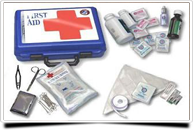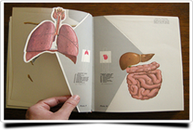موقع العيادة السورية
موقع العيادة السورية هو موقع طبي ثقافي يهتم باغناء المحتوى الطبي العربي على الانترنت.
يتألف الموقع من مجموعة غنية من الأقسام كالمكتبة الطبية, الموسوعات الطبية, المنتديات الطبية, وغيرها.
حالات سريرية في الأمراض الرثوية Rheumatology Cases
INSTRUCTION Look at this patient. SALIENT FEATURES History · Family history of obesity (parental obesity more than doubles the risk of adult obesity among both obese and non-obese children under 10 years of age, N Engl J Med 1997; 337: 869-73). · History of sleep apnoea, snoring and insomnia. · History of hypertension, diabetes, hyperlipidaemia, cardiovascular disease. · Gastro-oesophageal reflux. · History of gallstones (cholesterol gallstones more prevalent in obesity). · History of endometrial cancer in women (two to three times more common in obese than in lean women). · History of breast cancer (risk increases with body mass index in postmenopausal women). · Cancer of gallbladder and biliary system (obese women have a higher incidence). · Cancer of colon, rectum and prostate, and renal cell cancer (N Engl J Med 2000; 343:1305-11) (higher in obese men). Examination Patient has excessive adipose tissue. Proceed as follows: · Measure the height and body weight (to determine body mass index). · Check blood pressure (the prevalence of hypertension is approximately three times higher in the obese than the non-obese). · Examine the joints to exclude osteoarthrosis. · Examine skin for intertrigo in redundant folds of skin (fungal and yeast infections of skin are also common). · Tell the examiner that you would like to: -Assess urine sugar (the prevalence of diabetes is three times higher in overweight than in non-overweight persons). -Check serum lipids (these patients otlen have an adverse pattern of plasma lipoproteins that generally improves with weight loss). -Assess pulmonary function (sleep apnoea). -Exclude secondary causes (hypothyroidism, Cushing's syndrome, polycystic ovary syndrome). DIAGNOSIS This patient has gross obesity (lesion) of genetic origin, complicated by hyper-tension and osteoarthrosis. ADVANCED-LEVEL QUESTIONS Is obesity of genetic origin? Although many obese individuals are blamed for being obese - by their friends, physicians, family and by themselves - increasingly it has been shown that genetic influences have a substantial influence on body mass index. The ob gene is an adipocyte-specific gene that encodes leptin, a protein that regulates body weight. Animals with mutations in the ob gene are obese and lose weight when given leptin (Nature 1994; 372: 425-32). In humans, serum leptin concentrations correlate with the percentage of body fat, suggesting that most obese people are insensitive to endogenous leptin (leptin resistance). What is the body mass index? It is a measure to determine the presence of excessive adipose tissue and is cal-culated by dividing the body weight in kilograms by the height in metres squared. The normal spread of the body mass index is from 20 to 25 kg/m2. What is morbid obesity? It is relative weight greater than 200% and is associated with a ten-fold increase in mortality rate. Mention some adverse health consequences of obesity. Obese people have a greater risk for diabetes mellitus, stroke, coronary artery disease, premature mortality, thromboembolism, gallstones, reflux oesophagitis, sleep apnoea, polycythaemia, and cancer of the colon, rectum, prostate, uterus, breast and ovary. The risk of death from all causes is increased and the risk associated with a high body mass index is greater for whites than blacks (N Engl J Med 1999; 341: 1097-105). Also, higher maternal weight before pregnancy increases the risk of late fetal death although it protects against delivery of a small-for-gestational age infant (N Engl J Med 1998; 338: 147-52). What patterns of obesity correlate with premature coronary artery disease? Central obesity (abdomen and flank) and when there is excessive visceral fat within the abdominal cavity rather than subcutaneous fat around the abdomen. How would you manage such patients? · Multidisciplinary approach to weight loss: hypocaloric diets, exercise, social support. · Drugs: orlistat (orlistat partially inhibits the absorption of dietary fat by binding to pancreatic lipase in the gastrointestinal tract) (Lancet 1998; 352: 167-73). · Surgery: vertical banded gastroplasty, gastric bypass operations. What are the mechanisms of obesity? · Insensitivity to leptin, presumably in the hypothalamus. · Neuropeptide Y-induced hyperphagia. · Deficiency of production or action of anorexigenic hypothalamic neuropeptides. · Increased secretion of insulin and glucocorticoid. · Mutation in the gene for PPAR-¥ accelerates differentiation of adipocytes and may cause obesity (N Engl J Med 1998; 339: 953-9). PPAR-¥ is peroxisome proliferator-activated receptor-¥ and is a nuclear receptor through which the thiazolidinedione class of antidiabetic drugs acts. Mention some syndromes in which obesity is a prominent feature. Cushing's syndrome , Laurence-Moon-Biedl syndrome , pickwickian syndrome, Alstrom's syndrome, Prader-Willi syndrome. What is the link between obesity and diabetes? Fat cells release free fatty acids and tumour necrosis factor-alpha which cause insulin resistance, and leptin causes insulin sensitivity. A new protein called resistin that is secreted by fat cells causes insulin resistance. A group of antidiabetic drugs, the thiazolidinediones, reduces insulin resistance by suppressing the expression of resistin by the fat cells (Nature 2001; 409: 307-12).Obesity
INSTRUCTION Examine this patient's joints. Look at this patient. SALIENT FEATURES History ,, Maculopapular rash. · History of fever in the initial stages of the disease. · Joint pains, swelling, determine onset and course. Examination · Micrognathia. · Joints usually involved are upper cervical apophyseal joints, carpometacarpal joints and terminal interphalangeal joints. · Splenomegaly and lymph node enlargement. DIAGNOSIS This patient has micrognathia, arthropathy of terminal interphalangeal joints and a past history of maculopapular rash (lesion) due to Still's disease (aetiology). Read BMJ 1995; 310: 728-31. ADVANCED-LEVEL QUESTIONS What do you know about juvenile chronicarthritis? The diagnosis is made when a child aged less than 16 years has arthritis for at least 6 weeks with no other apparent cause. After 6 months of disease three major patterns are seen: · Still's disease (10 20% of cases) is defined as arthritis associated with daily tem-perature spikes to 39.4°C (103°F) for at least 2 weeks with or without macule-papular rash. · Polyarticular juvenile chronic arthritis (15-25%) in which five or more joints are affected. Early fusion of the mandible and cervical spine result in a receding chin and early fusion of the cervical spine. · Pauciarticular juvenile chronic arthritis (60-75%) which affects four or less joints; iritis is common in girls, whereas sacroiliitis is common in boys. What are the complications of juvenile chronic arthritis? · Pain, lethargy, anorexia and irritability. · Joint contractures. · Anaemia. · Chronic anterior uveitis. · Growth disturbance. · Amyloidosis. · Joint failure. How would you treat a patient with juvenile chronic arthritis? · Education about the disease, counselling and social support. · Physical and occupational therapy: monitoring and recording range of movement of joints, exercises to increase range of movement and muscle bulk, hydro-therapy, splinting. * NSAIDs: naproxen, ibuprofen, piroxicam, indometacin (indomethacin), diclofenac. · Intra-articular steroids: triamcinolone, methylprednisolone acetate. What is the risk of treating young children with salicylates? Reye's syndrome has been reported in children treated with aspirin for fever accompanying viral infections such as influenza. Children with juvenile chronic arthritis who are treated continuously for long periods have not been shown to have an increased incidence of this syndrome (Pediatrics1980; 66: 859). What are the poor prognostic factors? · Chronic and polyarticular arthritis, particularly in patients with a systemic or pauciarticular onset. · Polyarticular onset and a positive test for immunoglobulin rheumatoid factor. Which drugs have been used in the treatment of resistant juvenile rheumatoid arthritis? · Penicillamine. · Hydroxychloroquine. · Methotrexate (long-term therapy should be avoided as it is known to cause hepatic fibrosis) (N Engl J Med 1992; 326: 107'7). Sir George Fredrick Still (1868-1941), a London physician, described 12 children (in 1897) who had a polyarthritis which he stated should be distinguished from rheumatoid arthritis, and a further six children with a disease indistinguishable from adult rheumatoid arthritis. The distinctive findings in the first group included splenomegaly, lymphadenopathy, frequent occurrence of pericarditis and a predilection for cervical spine involvement. He also noted that fever and growth retardation were prominent features (Still GF 1897 On a form of chronic joint disease in childhood. Med Chir Trans 80: 47). The rash, however, was first described by Eric G.L. Bywaters. R.D.K. Reye (1912-1977), an Australian histopathologist.Still's Disease
INSTRUCTION Examine this patient's joints. Examine the locomotor system in this patient. SALIENT FEATURES History · History of diabetes (Medicine 1972; 51:191 210). · Gait deformity. · Loss of pain threshold. · Atrophy of muscles of the joint. Examination · Enlargement of the affected joint (compare with the other side). · Instability of the joint, in particular hypermobility of the joint. · May be warm, swollen and tender in the early stages. · Enlargement and crepitus may be present in the later stages. Proceed as follows: · Check sensation in the affected limb. · Tell the examiner that you would like to investigate as follows: -Do a thorough neurological examination, looking for loss of proprioception, and/or pain sensation, and vibratory sensation with a 128 Hz tuning fork. - Examine the urine for sugar (looking for evidence of diabetes mellitus). -Ask for lancinating pains, check posterior column signs and look for Argyll Robertson pupil (tabes dorsalis). -Check for dissociated sensory loss (syringomyelia). -Test muscle strength. DIAGNOSIS This patient has Charcot's joint (lesion) due to diabetes mellitus (aetiology) and has marked deformity of the joint with restricted movement (functional status). QUESTIONS What do you understand by the term 'Charcot's joint'? It is a chronic progressive degenerative arthropathy resulting from a disturbance in the sensory innervation of the affected joint. It is a neuropathic arthropathy which represents a complication of various disorders affecting the nervous system. It results in gross deformity, osteoarthrosis and new bone formation from repeated trauma. Mention a few conditions responsible for the development of Charcot's joints. · Diabetic neuropathy - affecting tarsal joints, tarsometatarsal, metatarso-phalangeal joints. · Tabes dorsalis - affecting knee, hip, ankle, lumbar and lower dorsal vertebrae. · Syringomyelia - affecting shoulder, elbow, cervical vertebra. · Myelomeningocele - affecting ankle, tarsus. · Miscellaneous: hereditary sensory neuropathies, peripheral nerve injury, congenital insensitivity to pain, leprosy. Jean Martin Charcot (1825-1893) was a French neurologist. He was a Professor of Pathology in 1872 and Professor of Nervous Diseases in 1882. The other conditions that bear his name include the following: Charcot's fever (intermittent fever due to cholangitis), Charcot's triad (intention tremor, nystagmus and scanning speech in multiple sclerosis), Charcot-Leyden crystals (seen in the sputum of asthmatics), Charcot-Marie-Tooth disease (peroneal muscular atrophy), Charcot-Wilbrand syndrome (visual agnosia).Charcot's Joint



